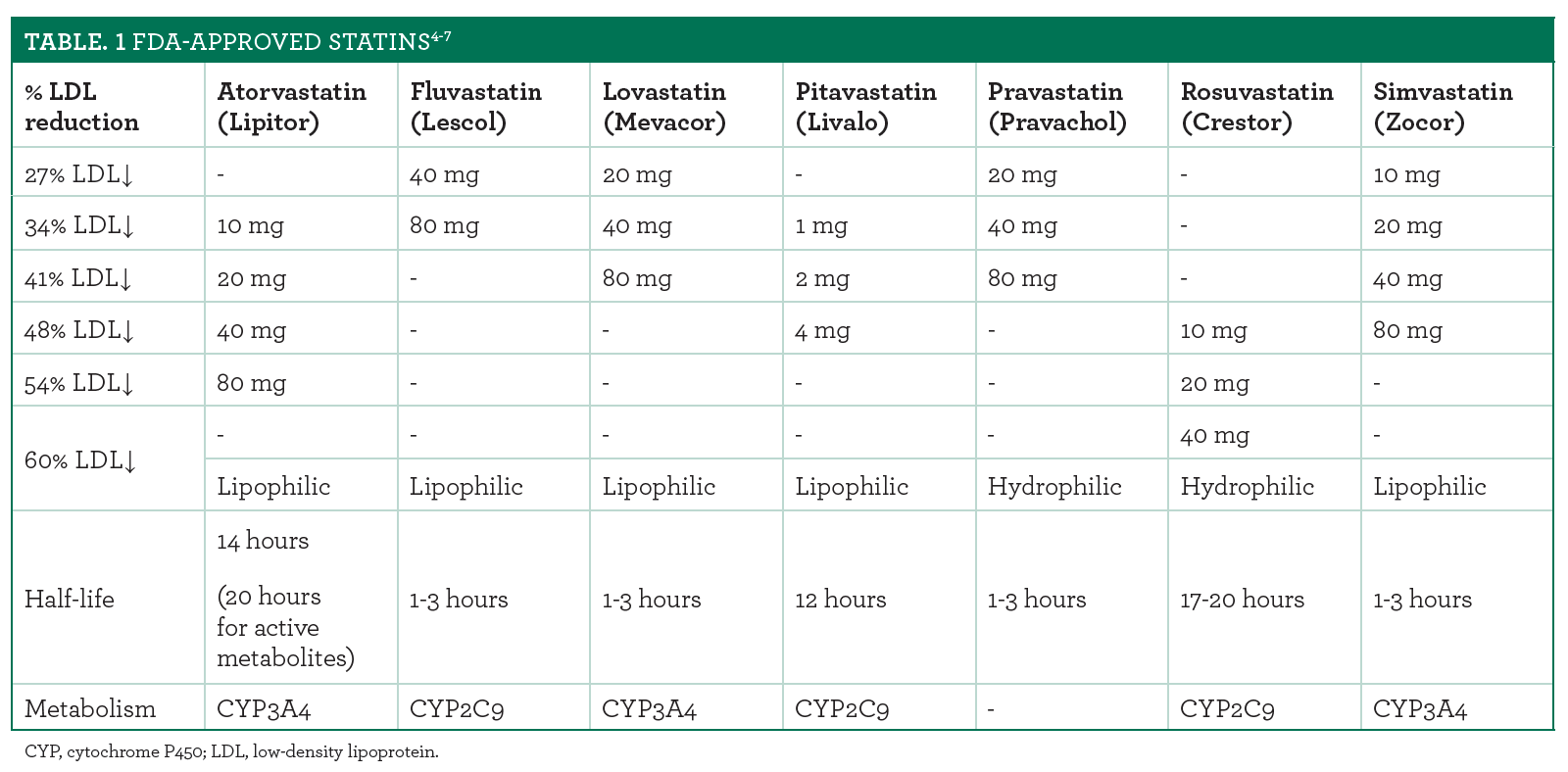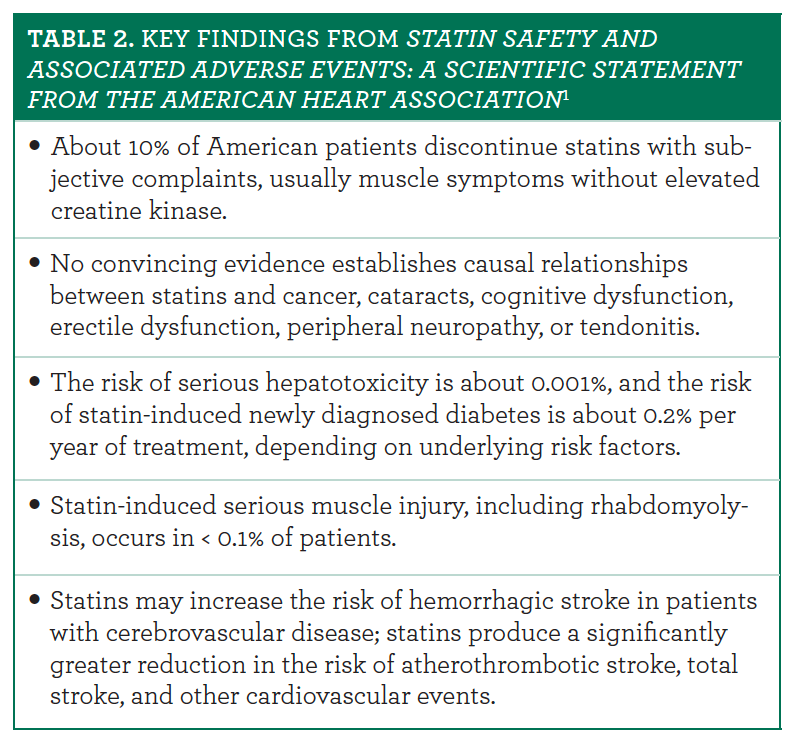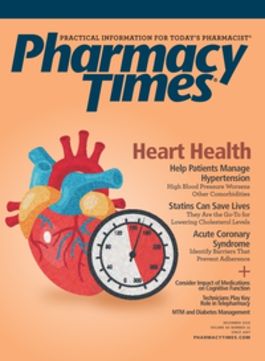Publication
Article
Pharmacy Times
Statins Are the Cornerstone of Lowering Cholesterol Levels
Author(s):
Patients may ask whether statins cause muscle toxicity, despite much evidence to the contrary.
Since the 1960s, investigators have known that cholesterol produced in the liver exceeds what is absorbed from the diet. For many individuals, this translates to significantly elevated cholesterol levels. The statins are 1 of 7 FDA-approved classes of cholesterol-lowering agents, and the class contains 7 medications. They remain the first-line drugs for treating lipid disorders and can lower low-density lipoprotein (LDL) cholesterol levels by as much as 60%.1
Originally, a Japanese investigator extracted these compounds from fungi in the 1970s. His hypothesis, that microbes would produce antibiotics that inhibited HMG-CoA reductase as defense mechanisms against other microbes that require sterols or certain isoprenoids for their growth, proved true.2,3 Lovastatin, pravastatin, and simvastatin are still derived from fungi, and the other 4 are synthetic.
The statins’ main function is to lower LDL levels. Statins inhibit HMG-CoA reductase activity, which decreases hepatic cholesterol content and upregulates hepatic LDL receptors. This increases LDL clearance, but the magnitude of the effect varies by the drug used.4-7 Table 14-7 lists the FDA-approved statins and the expected change in LDL levels with various doses.

SAFETY FIRST
Individual statins have different pharmacokinetic properties that contribute to their drug interactions and safety profiles. Statins are cleared primarily by the gastrointestinal tract and liver, with low renal clearance. Atorvastatin’s renal clearance is the lowest, so it is the statin of choice in patients with significant renal disease. Statins’ half-lives also vary, and prescribers have used that characteristic in patients who tolerate statins poorly. Using a long-acting statin every other day or twice a week can increase tolerability.4-7 Patients who take the short-acting statins should do so in the evening because HMGCoA reductase peaks then. The long-acting statins can be taken at any time.
Each drug’s metabolism affects its interactions, and drugs that inhibit cytochrome P450 3A4 (CYP3A4) can impede statin metabolism, resulting in elevated statin serum levels. Elevated levels increase the chance of adverse effects, especially muscle toxicity. If a patient needs treatment that usually involves a CYP3A4 inhibitor, prescribers can explore treatment options that do not inhibit CYP3A4, switch to a statin metabolized via another pathway, or temporarily interrupt statin treatment while using the CYP3A4 inhibitor.
CYP2C9 inhibitors do not elevate fluvastatin, pitavastatin, or rosuvastatin levels, and investigators suggest this is because the CYP2C9 pathway is not dominant.
The mechanism by which statins enter the liver also contributes to drug interactions. Organic anion transporting polypeptides, particularly OATP1B1, transport the statins.4-6 Drugs that inhibit OATP1B1, such as clarithromycin, cyclosporine, indinavir, ritonavir, and saquinavir, may increase serum levels and the likelihood of muscle toxicity.4-7 Fluvastatin is least likely to be affected by OATP1B1 inhibitors.8
STATIN ADVOCATE
The American Heart Association (AHA) has published a scientific statement on statin adverse effects and safety. Table 21 summarizes its findings. Of note, randomized clinical trials indicate the incidence of muscle symptoms without significantly elevated creatine kinase in statin-treated participants is less than 1%. This suggests that the statin’s pharmacological effects do not usually cause muscle symptoms. The AHA acknowledges that restarting statin therapy in these patients can be trying, but prescribers should emphasize statins’ importance, especially for patients with elevated cardiovascular risk. The AHA stresses that benefits outweigh the risks in patients for whom guidelines recommend statins.1

CONCLUSION
Despite much evidence to the contrary, patients may still ask whether statins cause muscle toxicity. Discussing the benefits and risks can augment pharmacists’ assurances that almost everyone finds statins tolerable.
Jeannette Y. Wick, RPh, MBA, FASCP, is the assistant director of the Office of Pharmacy Professional Development at the University of Connecticut School of Pharmacy in Storrs.
REFERENCES
- Newman CB, Preiss D, Tobert JA, et al. Statin safety and associated adverse events: a scientific statement from the American Heart Association. Arterioscler Thromb Vasc Biol. 2019;39(2):e38-e81. doi:10.1161/ATV.0000000000000073
- Endo A, Kuroda M, Tsujita Y. ML-236A, ML-236B, and ML-236C, new inhibitors of cholesterogenesis produced by Penicillium citrinum. J Antibiot (Tokyo). 1976;29(12):1346-1348. doi:10.7164/antibiotics.29.1346
- Endo A. A gift from nature: the birth of the statins. Nat Med. 2008;14(10):1050- 1052. doi:10.1038/nm1008-1050
- Causevic-Ramosevac A, Semiz S. Drug interactions with statins. Acta Pharm. 2013;63(3):277-293. doi:10.2478/acph-2013-0022
- Hu M, Tomlinson B. Evaluation of the pharmacokinetics and drug interactions of the two recently developed statins, rosuvastatin and pitavastatin. Expert Opin Drug Metab Toxicol. 2014;10(1):51-65. doi:10.1517/17425255.2014.851667
- Sirtori CR. The pharmacology of statins. Pharmacol Res. 2014;88:3-11. doi:10.1016/j.phrs.2014.03.002
- Bellosta S, Corsini A. Statin drug interactions and related adverse reactions: an update. Expert Opin Drug Saf. 2018;17(1):25-37. doi:10.1080/14740338.2018.139 4455
- Holdaas H, Fellstrom B, Jardine AG, et al; Assessment of LEscol in Renal Transplantation (ALERT) Study Investigators. Effect of fluvastatin on cardiac outcomes in renal transplant recipients: a multicentre, randomised, placebo-controlled trial. Lancet. 2003;361(9374):2024-2031. doi:10.1016/S0140-6736(03)13638-0
























